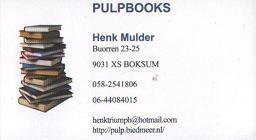Er zijn nog geen producten in jouw winkelwagen geplaatst.



Product toegevoegd aan jouw offerte. Ga naar de offertepagina om jouw offerte aan te vragen. Wij nemen dan zo spoedig mogelijk contact met je op.
The human revolution
This book brings together the mass of evidence we now have for man's original break with the animal world and for the millions of years of his slow evolution into hunter and tool-maker.
Desmond Collins assembles the results of recent research in all branches of prehistory and, guided by the newest techniques of radiocarbon dating and pollen analysis, pieces together a concise account of man's earliest existence. He gives substance to the primeval men whose fossil bones found now in Australia and Siberia as well as in their African homelands, betray the course of our development from the apes. Geological reconstruction and estimates of former fluctuations of climate suggest whether it was tropical forest or the encroaching ice that these men had to contend with and whether it was hippo or mammoth whose conditions they shared. lt becomes apparent just what a revolutionary force it must have been that eventually brought ice age man his masteryof stone tool making, his control of fire and the extraordinary arlistic skill displayed in delicately carved pieces of bone and flamboyant cave paintings.
Our knowledge has increased rapidly in the 150 years since Darwin finally convinced modern man of his animal ancestry. Controversy abounds however. And whether Neanderthal man has a place with Homo sapiens and Cromagnon man among our direct forbears is one dispute ttiat Desmond Collins looks into in detal
Desmond Collins lectures in prehistory for the University of London.
CONTENTS
Introduction
Chapter I
The Discovery of Early Man
Chapter II
The Great Ice Ages
Chapter III
Apes and Human Ancestry
Chapter IV
The First Men
Chapter V
Neanderthal Man
Chapter VI
The Cave Artists
Chapter VII
Hunting Societies
Chapter VIII
The Rise and Fall of Cromagnon Man
List of illustrations
Index
This book charts the course of two revolutions and describes the events leading up to a third.
It chronicles first of all a revolution in thought when, only just over a hundred years ago, it became impossible to deny overwhelming evidence presented by the Darwinians for man's animal ancestry.
It was then that the full story of man's break with the animal world began to come to light. A slow physical and cultural evolution became apparent. Mastery of stone tool-making and a new-found success as a hunter, the emergence of family life and the development of speech were seen to have constituted our second revolution, the original Human Revolution.
Our third revolution was the result of two million years of increasing echnical proficiency culminating in a host of fundamental inventions, including the bow and arrow, and in the brilliance of the painted caves of Lascaux and Altamira. Domestication of plants and animals led to a controlled food supply and the beginning of a settled life, bringing an end to the nomadic ways of ice age man.
